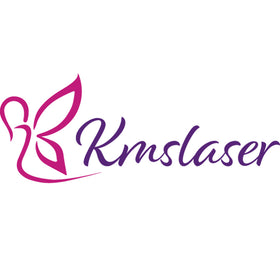Hydro Dermabrasion vs Microdermabrasion: What’s the Difference?
Comparing the Technology Behind Each Treatment
Microdermabrasion has been a mainstay in skincare clinics for decades, using a crystal spray or diamond tip to manually exfoliate the outermost layer of dead skin. It relies on physical abrasion and vacuum suction to improve texture and stimulate cell turnover. In contrast, hydro dermabrasion takes this concept further by using water-based exfoliation combined with serum infusion. Instead of scratching or scraping, it hydrates while it exfoliates, making it gentler, more soothing, and safer for sensitive or dehydrated skin.
| Treatment Type | Exfoliation Method | Additional Action |
|---|---|---|
| Microdermabrasion | Crystal or diamond-tip abrasion | Vacuum suction only |
| Hydro Dermabrasion | Jet water exfoliation | Serum infusion + oxygen therapy |
Who Should Choose Which Treatment?
Microdermabrasion is ideal for thicker, oily, or acne-scarred skin that benefits from deep mechanical resurfacing. It’s often chosen by clients looking to reduce roughness, mild scars, or clogged pores—but may be too harsh for dry or reactive skin types. Meanwhile, hydro dermabrasion is excellent for clients with dehydration, sensitivity, rosacea, or dullness. Its hydrating properties and lack of abrasion make it suitable for virtually all skin types, including teens and older adults.
| Skin Type | Recommended Treatment | Why |
|---|---|---|
| Thick or oily skin | Microdermabrasion | Aggressive exfoliation removes buildup |
| Dry, dehydrated skin | Hydro Dermabrasion | Moisturizes while exfoliating |
| Sensitive or rosacea-prone skin | Hydro Dermabrasion | No abrasive friction, calming serums |
Device Maintenance and Staff Training Considerations
From a spa owner’s perspective, hydro dermabrasion offers greater flexibility, especially for clients with mixed or reactive skin. It’s also more hygienic, as it uses disposable tips and self-cleaning water circuits. Microdermabrasion machines tend to require more frequent filter changes and tip sanitation. Training for hydro dermabrasion is typically faster, and newer staff can perform treatments confidently after brief instruction.
| Feature | Microdermabrasion | Hydro Dermabrasion |
|---|---|---|
| Maintenance Frequency | High | Moderate |
| Staff Learning Curve | Medium to high | Beginner-friendly |
| Disposable Consumables | Tips, filters | Tips, serums (customizable) |
Frequently Asked Questions (FAQ)
Q: Which treatment is better overall?
A: It depends on your skin type and goals. Hydro dermabrasion is more versatile and gentler. Microdermabrasion is stronger for texture correction.
Q: Can I alternate both treatments?
A: Yes! Many clinics offer hydro dermabrasion first, followed by microdermabrasion in later sessions for deeper resurfacing.
Q: Which is more profitable for spa businesses?
A: Hydro dermabrasion tends to attract more bookings due to comfort, safety, and zero downtime.
Q: Can I use hydro dermabrasion on teens?
A: Yes, it’s very safe for younger, acne-prone, or hormonal skin.
Q: Where can I get a device that offers both?
A: Check out our 8-in-1 multifunctional system here: hydro dermabrasion + microdermabrasion combo machine.
Conclusion: Gentle or Deep—You Can Offer Both
Both treatments have their place in modern skincare. While microdermabrasion is great for texture and scars, hydro dermabrasion offers superior hydration, comfort, and broader applicability. With the right system, you can offer both—and let your clients’ skin decide.
📞 Need help choosing the best multifunctional machine?
Email sophia@kmslaser.com or contact via WhatsApp: +86 18676839070





